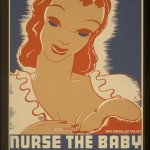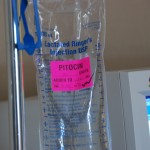March 12, 2014
Is Your Favorite in the Top Five? - Science & Sensibility's Five Most Popular Posts
By: Sharon Muza, BS, LCCE, FACCE, CD/BDT(DONA), CLE | 0 Comments
I have been working as Science & Sensibility's Community Manager for a few weeks shy of two years. The past two years have been one of great growth for me personally, as I have stretched myself to explore and more clearly understand research related to maternal infant health. I have "labored" to choose topics that are of interest, current and relevant to our readers. I have deeply enjoyed supporting and collaborating with the many gifted writers who have been kind enough to share their wisdom and their words with all of us. I have welcomed and enjoyed the reader comments and shared discussions with many readers, as they made their opinions, thoughts and viewpoints known. I have learned along with all of you, as readers asked questions of the blog writers and clarified their understanding of topics. It has, to put it simply, been a fantastic and fun time.
As I reflected on the past two years , I wondered what have been the most popular posts on the blog, since Amy Romano wrote the first post on Science & Sensibility back in Spring of 2009. I took a look and found some surprises. I thought it would be interesting to share the top five posts and ask you, the reader - what posts have been your favorites? The ones you share with students, clients and patients over and over? The ones you most enjoyed reading?
Top Five Posts on Science & Sensibility
#5. Research Review: Facilitating Autonomous Infant Hand Use During Breastfeeding

© Raphael Goetter
This post reviewed research by Catherine Watson Genna, BS, IBCLC, RLC and Diklah Barak, BOT that demonstrated that babies use their hands at the breast for many purposes, including stabilizing their neck and head for feeding, causing the nipple to become erect and increasing maternal oxytocin which facilitates delivery of milk to the infant. The research paper included great photographs and links to videos documenting this behavior. All the more reason to encourage mothers to unswaddle babies prior to feeding to allow them to do what they do best.
#4. Help New Mothers Breastfeed in Comfort: Nordstrom Converts Any Bra Into A Nursing Bra for a $10 Fee

© Children's Bureau Centennial. WPA Project 1938
#3. Safe Prevention of the Primary Cesarean Delivery: ACOG and SMFM Change the Game
This recent post by Judy Lothian, Phd, RN, LCCE, FACCE, highlighted the newly released ACOG and SMFM Consensus statement discussing 18 points that these organizations stated would help to reduce the number of primary cesareans being performed. This statement was groundbreaking in its language, suggestions and proposed modifications to current obstetrical practice, backed up by evidence and certainly in line with much of the research behind Lamaze International's Six Healthy Birth Practices.
#2. What Is the Evidence for Induction for Low Amniotic Fluid in a Healthy Pregnancy?

© drewesque
#1. The Red/Purple Line: An Alternate Method For Assessing Cervical Dilation Using Visual Cues
This post reviewed research by Catherine Watson Genna, BS, IBCLC, RLC and Diklah Barak, BOT that demonstrated that babies use their hands at the breast for many purposes, including stabilizing their neck and head for feeding, causing the nipple to become erect and increasing maternal oxytocin which facilitates delivery of milk to the infant. The research paper included great photographs and links to videos documenting this behavior. All the more reason to encourage mothers to unswaddle babies prior to feeding to allow them to do what they do best.
Are you surprised by the top five posts on Science & Sensibility? Do you have different favorites? What else would you like to see covered in the future on this blog? We welcome your input, your comments, suggestions and are interested in your favorite all time posts! Share your thoughts and suggestions in our comments section below.
Tags
Childbirth education Sensibility Maternal Infant Care Popular Posts